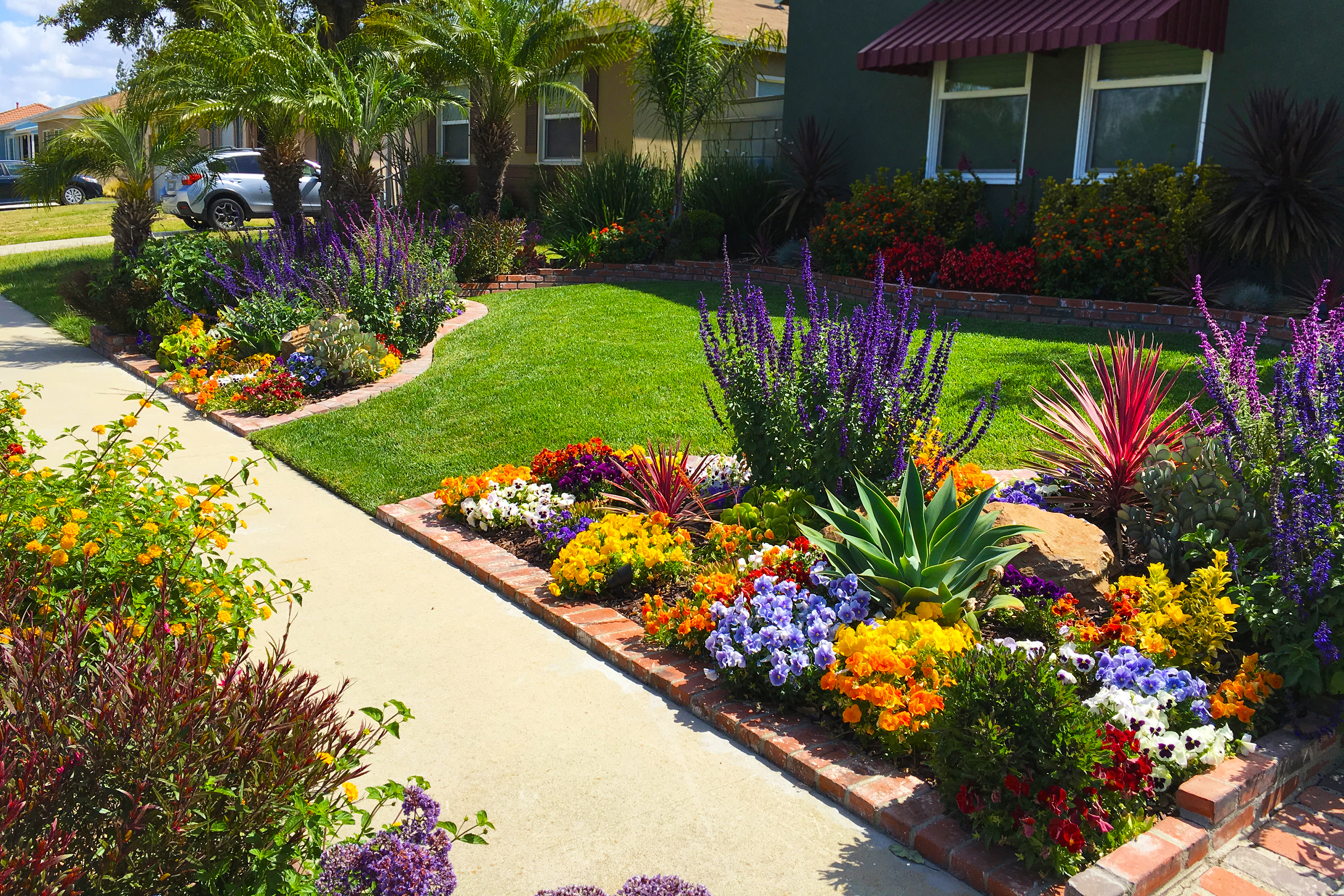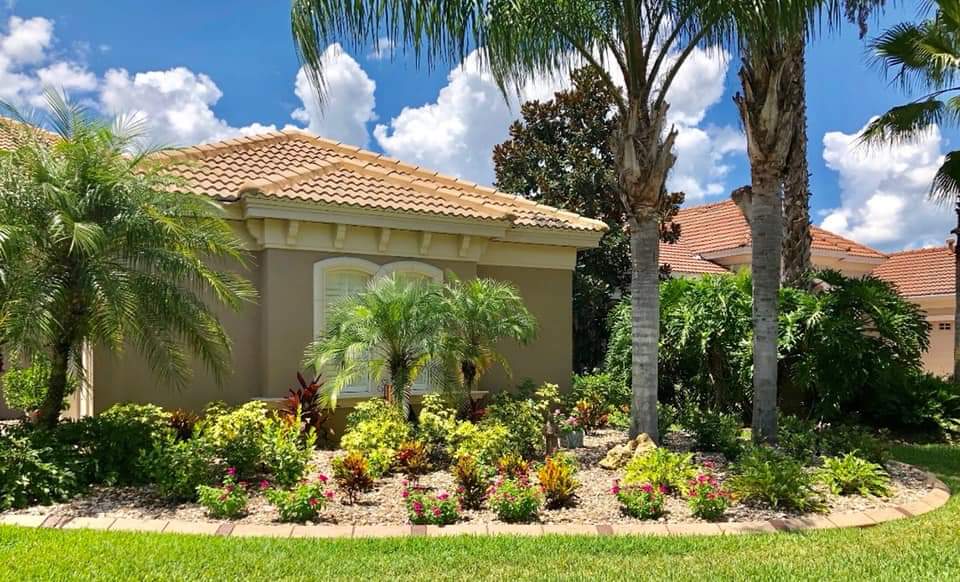Discover the Advantages of Lasting Palm Desert Landscaping Techniques
Discover the Advantages of Lasting Palm Desert Landscaping Techniques
Blog Article
A Comprehensive Guide to Creating and Implementing Effective Landscaping Solutions
The art and science of landscape design expand past mere looks; they include a thoughtful assimilation of style concepts, environmental stewardship, and sensible application. A detailed guide to efficient landscaping remedies starts with a thorough understanding of your exterior area, stressing the relevance of equilibrium, unity, and proportion. As we discover sustainable strategies and the selection of proper plants, the effects for biodiversity and area health come to be progressively apparent. What strategies can one use to make sure these landscapes not just flourish yet additionally thrive attuned to their surroundings?

Recognizing Landscape Style Principles
One might wonder what foundational components contribute to effective landscape style. At its core, successful landscape style hinges on numerous vital principles that guide the arrangement and selection of aspects within a room. These concepts consist of unity, equilibrium, proportion, and rhythm, each serving to develop an unified exterior atmosphere.
Unity describes the cohesive relationship among numerous parts, guaranteeing that they interact aesthetically and functionally. Balance can be achieved with symmetrical or unbalanced arrangements, allowing the landscape to feel steady and welcoming. Percentage entails comprehending the range of components in regard to each other and the surrounding environment, advertising aesthetic harmony and convenience.

Examining Your Outdoor Room
Before applying the principles of landscape design, a comprehensive analysis of your exterior space is important. This initial analysis aids define the extent of your landscape design task and guarantees that your style lines up with the distinct characteristics of your home. Begin by examining the dimensions of your room, taking exact dimensions to comprehend the offered location for various aspects such as patio areas, gardens, and pathways.
Next, observe the existing functions of your landscape, consisting of topography, soil quality, and drainage patterns. These aspects significantly affect plant choice and placement. Furthermore, examine the sunshine exposure across various areas throughout the day, as this will certainly affect the sorts of plants that thrive in your yard.
Consider the microclimates developed by structures, trees, and other obstacles, as they can impact temperature level and dampness levels. Take note of any kind of existing plants or hardscape aspects that you desire to eliminate or preserve. This thorough examination prepares for a effective and educated landscaping remedy, ensuring that your design is not just aesthetically pleasing however sustainable and additionally functional for years to come.
Sustainable Landscaping Techniques
These techniques not just promote eco-friendly equilibrium yet additionally improve the visual and practical value of a landscape. Implementing effective watering systems, web such as drip watering, minimizes water waste and guarantees that plants get sufficient wetness (Palm Desert Landscaping).

Another effective technique is the calculated positioning of trees and shrubs to supply natural windbreaks and shade, thus lowering power costs (Palm Desert Landscaping). Rain yards can be incorporated into the landscape style to handle stormwater overflow efficiently, filtering contaminants prior to they go into waterways
Picking the Right Plant Kingdoms
Choosing the right plants for your landscape is critical to achieving both visual allure and ecological harmony. The process starts with an understanding of your neighborhood climate, dirt conditions, and the specific microenvironments within your landscape. Assessing elements such as sunshine exposure, wetness levels, and existing plants will assist you select plants that flourish in your one-of-a-kind setup.
Think about incorporating native plants, as they are well-adapted to local conditions, call for much less maintenance, and support regional wild animals. Furthermore, selecting a diverse range of varieties can enhance biodiversity while decreasing the danger of disease and pest episodes. It is necessary to assess the development habits, growing durations, and seasonal shades of potential plants to produce a cohesive and vibrant landscape.
Moreover, consider the intended use the space; for example, if the location will experience high foot traffic, go with resilient ground covers. this contact form By attentively choosing plants that line up with both your ecological demands and visual goals, you can develop a sustainable landscape that not just enhances your building however also adds positively to the bordering community.

Application and Maintenance Strategies
Once the appropriate plants have been selected for your landscape, the focus shifts to efficient implementation and recurring maintenance strategies. Successful installation begins with correct website prep work, that includes dirt testing to determine nutrient levels and pH, adhered to by amending the dirt as required. Meticulously arrange plants according to their development behaviors and light needs, making certain appropriate spacing to promote healthy development.
Irrigation is an essential component of execution. Develop a watering timetable that considers the details needs of each plant species, adjusting for seasonal changes. Making use of drip watering systems can improve water performance and reduce drainage.
Maintenance strategies should be executed to make sure the longevity and vitality of your landscape. Routine tasks consist of weeding, mulching, and trimming to manage growth and stop illness. Fertilization should be performed based on soil examinations, supplying the essential nutrients without over-fertilizing.
Keeping track of for conditions and pests is essential; early detection can avoid considerable damages. Seasonal changes to maintenance regimens, such as preparing and winterizing perennials for spring development, will guarantee that your landscape remains visually enticing and healthy year-round.
Verdict
Successful application and continuous upkeep better ensure the long life and vitality of landscapes. By incorporating these aspects, landscapes can be changed into attractive, functional atmospheres that promote biodiversity and contribute positively to neighborhood health.
One could wonder what foundational aspects add to reliable landscape design. At its core, effective landscape here style hinges on numerous key concepts that direct the arrangement and option of elements within an area.Choosing the right plants for your landscape is essential to attaining both aesthetic appeal and ecological consistency. It is essential to review the growth practices, flowering periods, and seasonal colors of potential plants to create a vibrant and natural landscape.
As soon as the best plants have been selected for your landscape, the focus shifts to efficient application and continuous upkeep techniques.
Report this page